Designing Your Design Culture
Designing Your Design Culture
The design process isn’t only meant for creating digital products or creating experiences. The design process is meant to solve problems, whatever they are. You could use the design process to find the love of your life, then use it to resolve your arguments about where to eat every night.
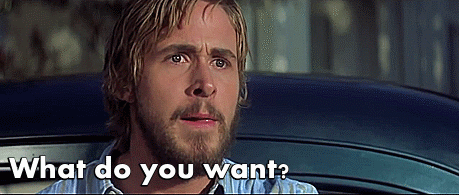
At GoDaddy, I joined a UX team that is growing with new faces. My manager, Cheriana, transformed the San Francisco office from just her, to a team of 6. I came into the position knowing that building the culture is going to be important. With a bunch of new faces, how do we create a strong design culture?
Who are these people?
When everyone was new, we didn’t have past GoDaddy projects to talk about and relying on each other for information about the organization was pointless. While we were all great at smiling at each other, and laughing at jokes we barely heard the other person say, we weren’t talking about design. Perhaps it was because we were all new and getting comfortable with each other. We weren’t showing how passionate we are. I trusted Cheriana hired people who are great at their craft and passionate. I wanted to find a way to bring that out to improve the design culture.
I thought back to my classes at Pratt, where great professors like Natalie Simms and Christina Latina would push us as a group of strangers to express ourselves about topics of our choice. Not only did it give everyone a chance to take center stage, it allowed everyone to deliver their perspective. No matter how much I thought I knew, someone always brought an experience or insight I could grow from.
How do I trick my co-workers to attend another design class? 🤔
Cheriana already organizes a weekly event called GOOB (Get Out Of the Building). Not only do we get to leave the building, GOOB is also fun to say (I give GOOB extra points for that alone). During GOOB we go to a random coffee shop (which always takes like 10 minutes to agree on) and work from there for about 2 hours. That was the initial intent but it started to evolve. We started talking about the projects we were working on, bombard Cheriana with question because we were new, or random things we noticed. One day, one of my co-workers, Gahee, walked through a full presentation she prepared. Then it hit me.
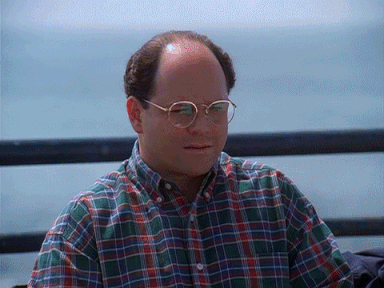
This would be a great time to have discussions about design!
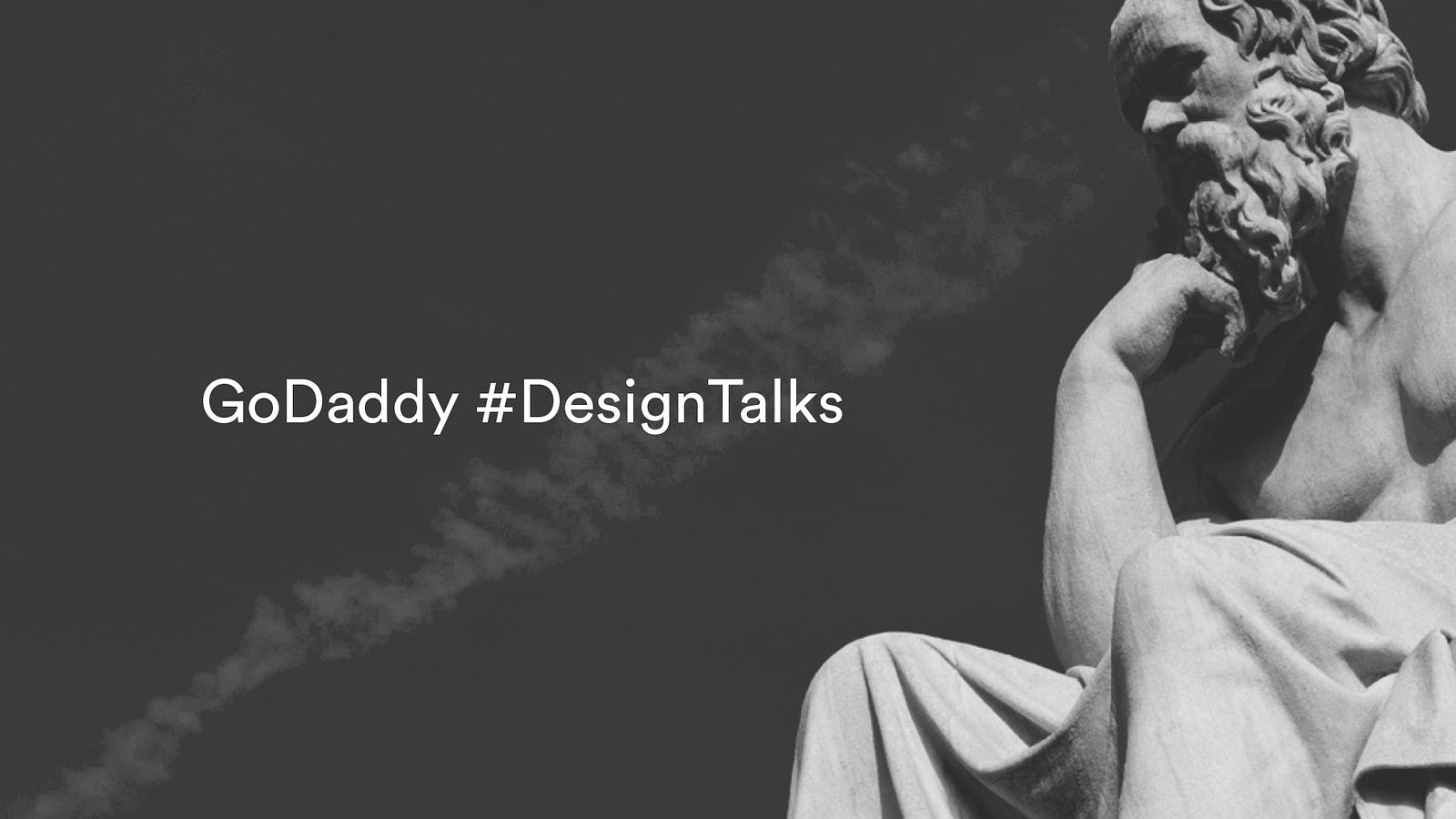
#DesignTalks was born! The goal of this talk is to inspire passionate conversations relating to design. I created a presentation to share the idea with the team (because I make presentations for literally everything) and got their feedback.
The setup went like so:
At the beginning of the week, artifact(s) are placed in the channel by one of the members of the team. The artifacts can be articles, blog posts, videos, a MeetUp, you performing interpretive dance, or anything that communicates a design related idea.
We would all interact with the artifacts and decide our initial point of view. We can post related pieces of information, anything that builds on the idea, questions the artifact invokes, or experiences at GoDaddy that relate.
At the end of the week, we all get together at a coffee shop during GOOB and discuss our impressions on the topic, why we lean toward a particular idea, personal experiences that may align, and talk about how it applies to the work we are doing.
I hoped each week we would end up with deep conversations that we all learned from, we learn more about everybody’s point of view, and we get more comfortable sharing ideas. All of these combined resulting in an improved design culture.
So how’d it actually go?
Most of that point of view stuff doesn’t happen, or the posting of related content. It is hard enough for everyone to find time to read the article, adding additional articles was a lofty goal.
The team was onboard with it and at our next GOOB following the meeting we gave it a shot. It was interesting. It’s actually pretty awkward to start off. Naturally someone has to give the order to start the conversation, which is how all great natural conversations start right? A couple people couldn’t make the first session so it started out with only 3 of us. We expressed what we thought about the article, exchange some different points of view, ate avocado toast (I know, we’re fancy), and got back to work.
Side note: I’m morally against avocado toast. How do we justify spreading avocado on bread costing $15 dollars? Is the labor cost?
The next week we tried it, the group was much bigger. Everyone in SF who didn’t make the first one joined, and another member from our team in Germany, Sasha, who was visiting, joined us as well. This time it turned into a design incubator/rally. We started off talking about the article, then transitioned into how to improve GoDaddy as a whole, improve all of our processes, and ideas on how to create continuity across our products.
This sparked an idea for me to spearhead the creation of design principles for our team.
Which failed but I learned a lot through the effort. More on that later.
The next weeks were always somewhere between those two extremes.
Some of the content we conversed about were:
The complex relationship between data and design in UX
Engineering a website is equal parts vision and adaptation ... responding both to how users navigate the site and what…www.ted.com
This article by Gahee revealed how passionate she is about user research.
Menus & Menu Buttons
Classification is hard. Take crabs, for example. Hermit crabs, porcelain crabs, and horseshoe crabs are not …inclusive-components.design
This article by Cheriana revealed how much she considered accessibility and how much she wanted us to focus on it as a team.
UX Writing: How to do it like Google with this powerful checklist
Notes from Google I/O 2017 on choosing the right wordsuxplanet.org
This article by Mika illuminated how meticulous she is about choosing the right words in her experiences.
Gestalt Theory for Efficient UX: Principle of Similarity.
Many designers can boast of having creative intuition and a sharp eye: they add as much passion and feeling into the…uxplanet.org
This article by Ben highlighted how much he wanted us as designers to really on principles, as much as data, to justify our design decisions.
What Screens Want
The past two years were a wild goose chase for answers. I read books, looked at art, listened to my heroes, and…frankchimero.com
My post showcases to the team I really like long articles, and challenging the status quo of design.
Raise your hand if your enjoying this
Like any good design process, you have to get feedback from your audience on your solution to know if it’s effective and to discover how you can iterate on it. I sent out a poll to get feedback on the talks after we had a few and these are some of the results I got.

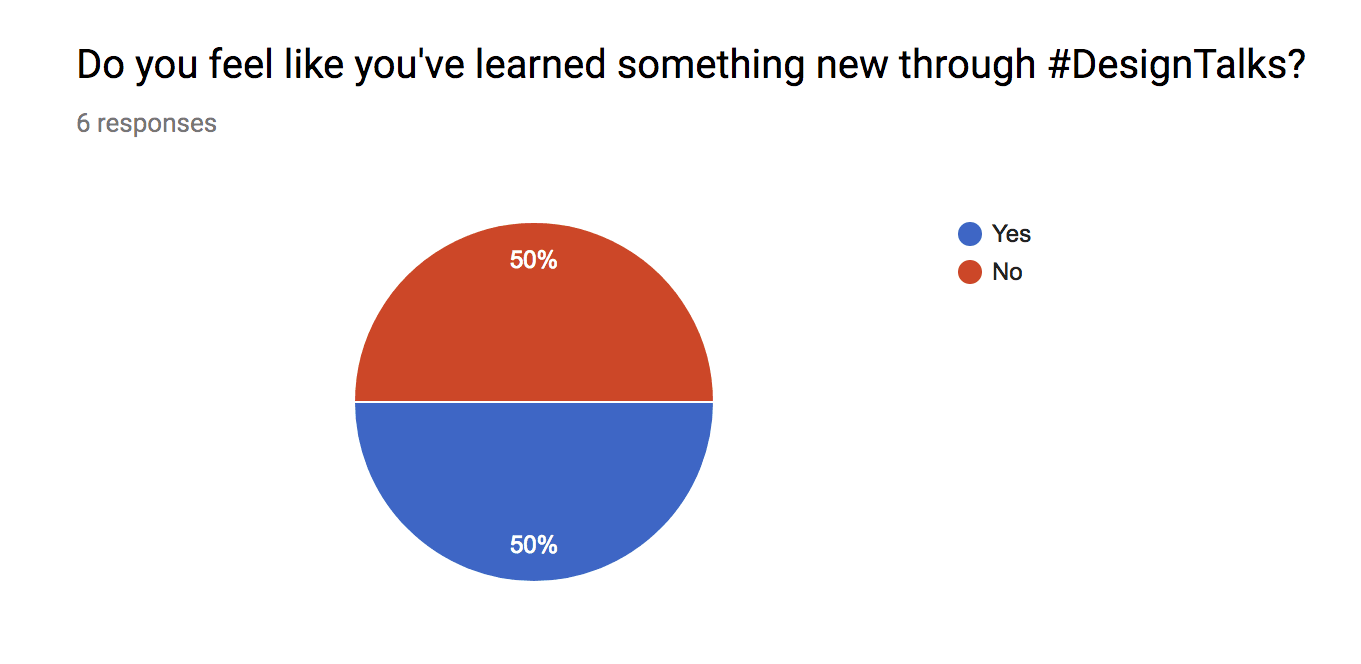

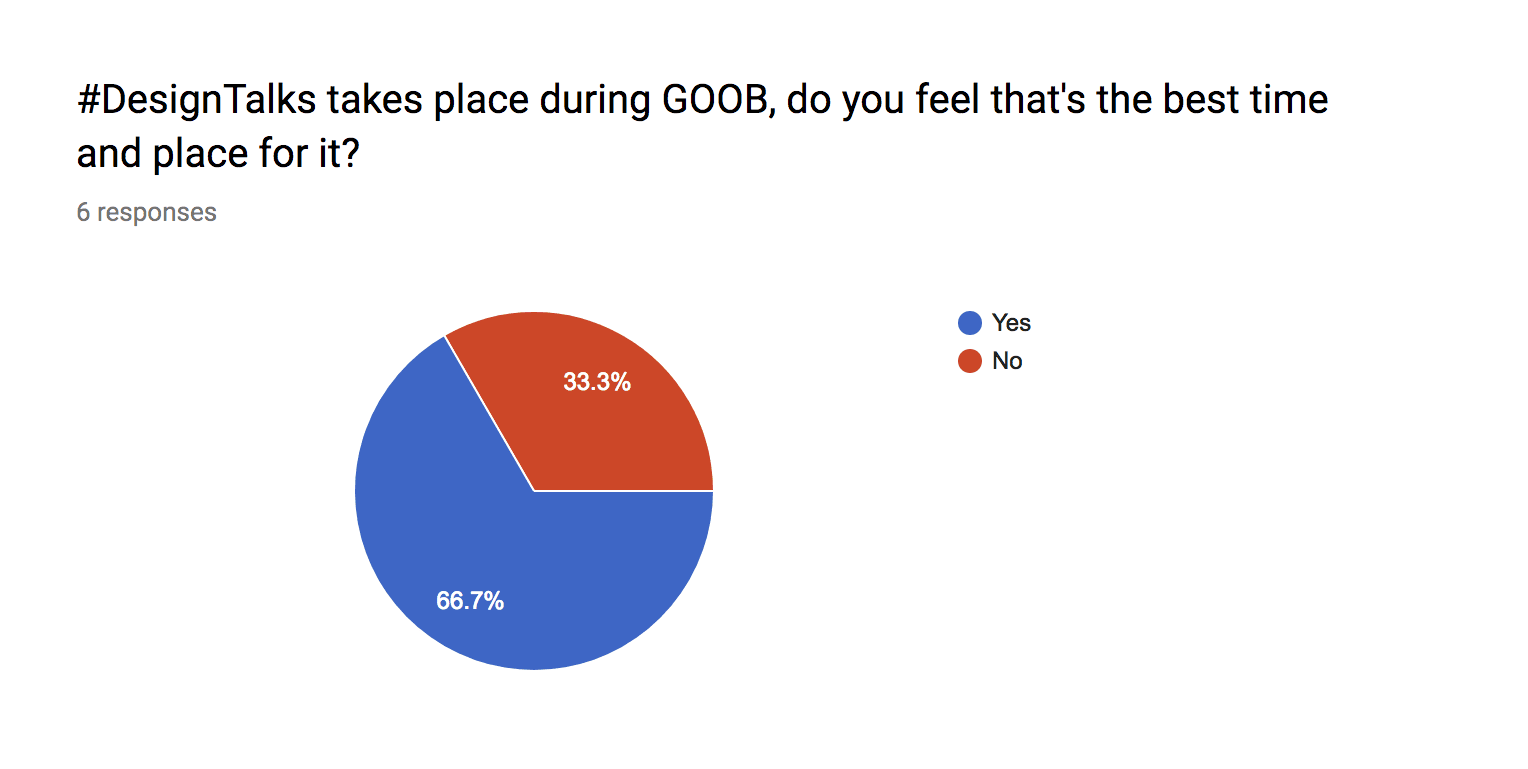

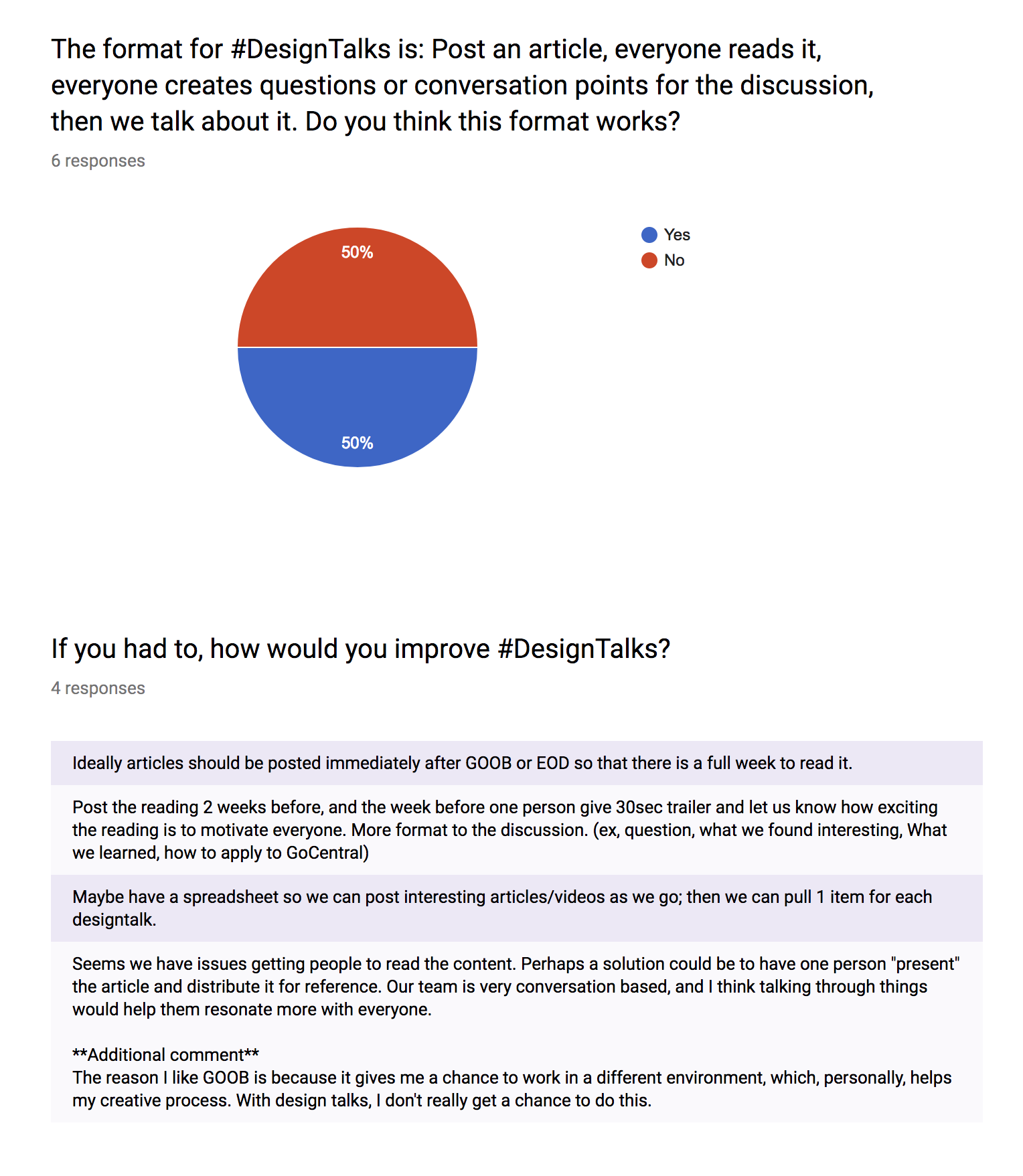
Some improvements to make
The questionnaire gave me some great feedback. The main discoveries where:
- People enjoyed #DesignTalks, which was really important to me
- Only half of the team felt like they were learning. I knew since there were designers of different levels involved that someone would be less likely to learn something new, but 50% was definitely a number I wanted to improve on.
- A 6.8/10 content rating was a number that could also be improved on
- A weeks notice wasn’t enough time to for everyone to commit to reading the articles
- Half the participants thought the format could be improved.
- GOOB was a valued time to work in a different environment, and #DesignTalks was taking away that ability
Listening to opinions and experiences from those who have had a longer time in industry than myself is extremely valuable. Also, helps us all get on the same page as designers especially when articles surround design principles and best practices
This anonymous feedback was music to my ears. Gave me the satisfaction I needed to know that it was working and to keep iterating on it.
#DesignTalks Today
After taking in all the feedback, I made some changes. I’ve introduced a calendar that stretches further into the future so everyone can have more time to read the articles, and a rating system for the articles. I will send out another survey and continue to iterate on #DesignTalks to ensure I’m solving the original problem, improving the design culture.
Over time, we’ve gone to happy hours and work events that has made us more comfortable as a team, but I feel that #DesignTalks has had an impact in helping us grow as a team and as designers. I have a better handle on the aspects of design people are intrigued by and know when and who to lean on for my areas of weakness. I see more spontaneous conversations in office about design and after our conversations about process, more wireframes and ideas are being shared, as opposed to just finished designs.
If your work environment isn’t the way you’d like it to be, identify the problems, and use the Design process we all hold dearly to our hearts to create solutions.
I’ll leave you with a quote from my StoicBot Messenger Chatbot.
Expecting is the greatest impediment to living. In anticipation of tomorrow, it loses today.
— Seneca